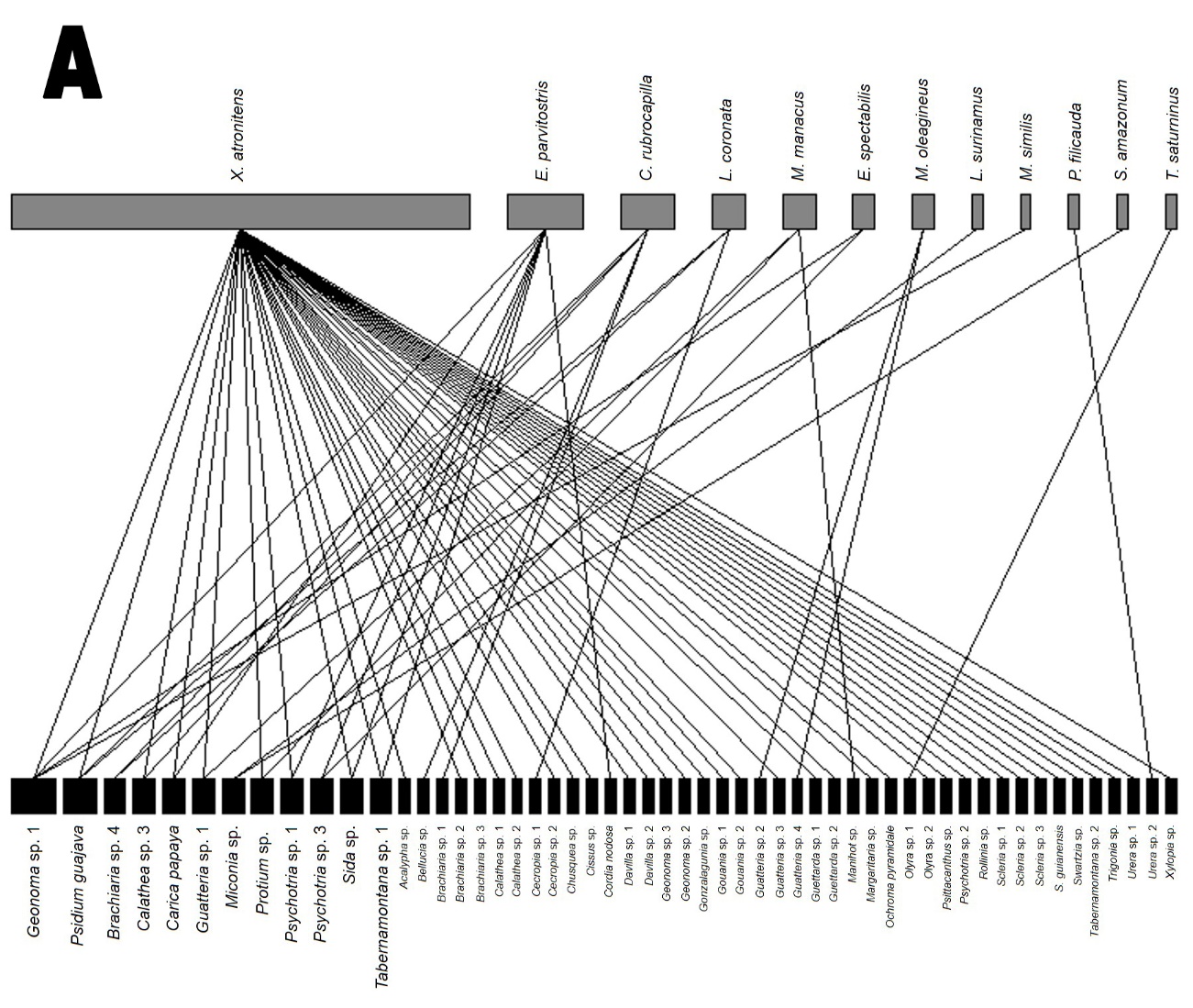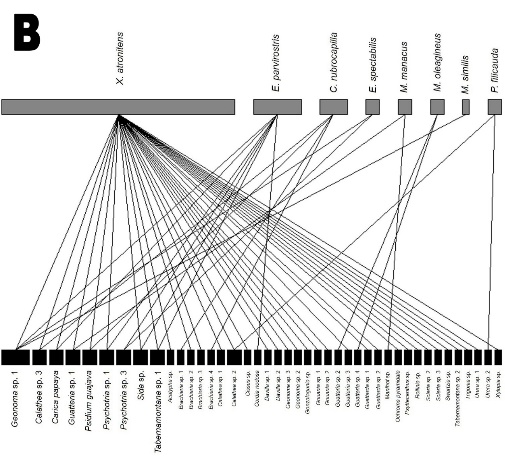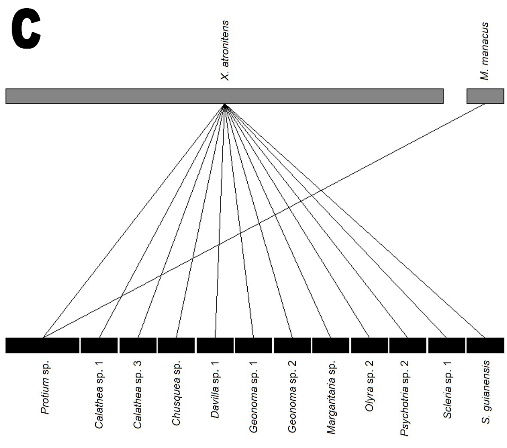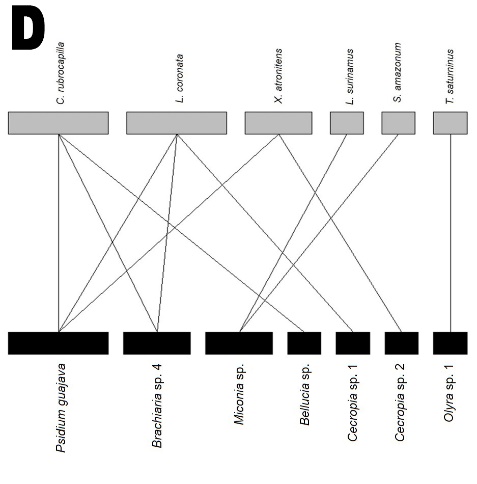The theme frugivorous birds-plants interaction in a campinarana enclave in southwestern Amazonia (Mâncio Lima-Cruzeiro do Sul), was the target of a master's degree work developed in one of the areas of PPBio and concluded by Maíra Santos Silva (Figure 1), student of the Graduate Program in Ecology and Natural Resource Management at the Federal University of Acre.
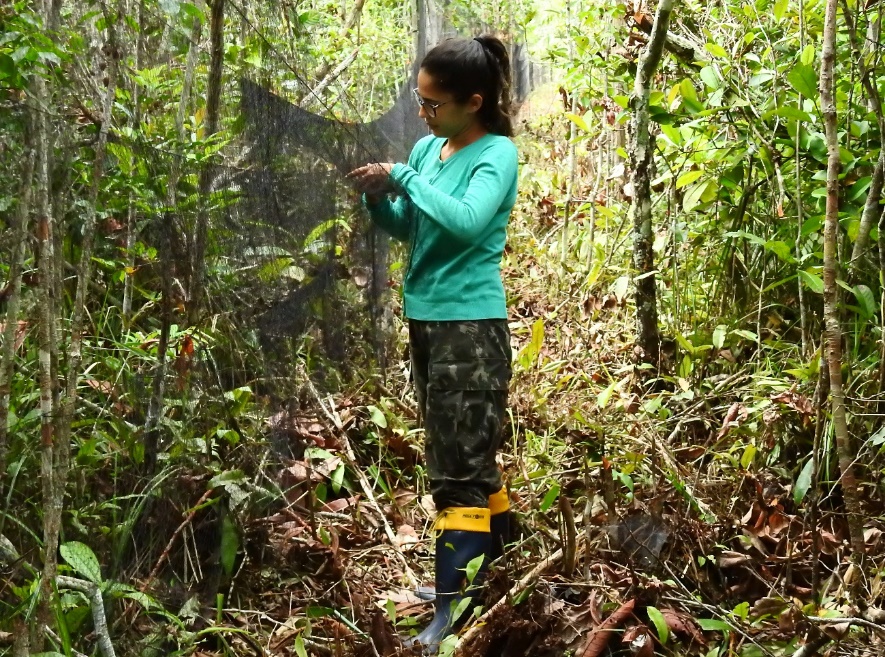 |
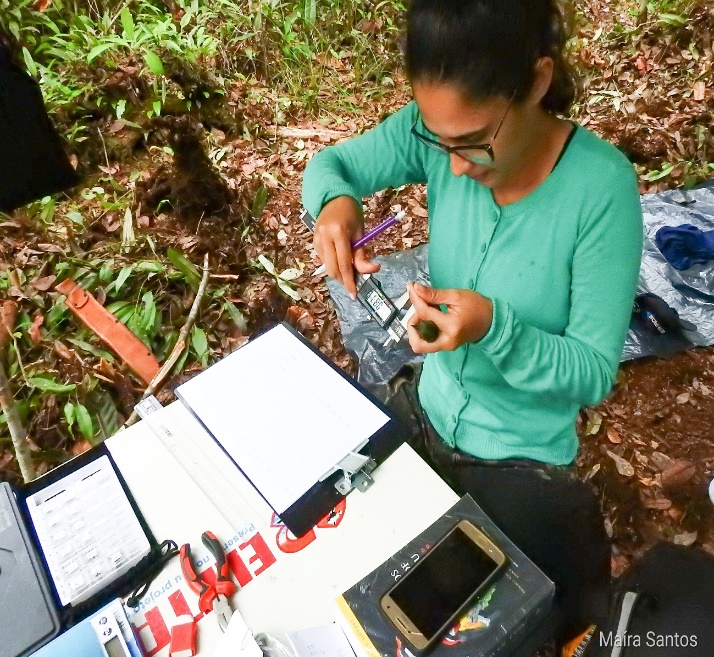 |
|
Figure 1
Maíra Santos in field work on the PPBio line, in the vegetation complex on white sand, Mâncio Lima-AC.
|
On the 5 km line established by the Acre Regional Nucleus in the vegetation complex on white sand, Maíra undertook a sampling effort of 135,000 h.m², 45,000 h.m² in each of the studied phytophysiognomies - bush shrub, tree and forest (Figure 2 ) and captured 396 birds and 49 species. Twelve of them provided 921 seeds in the fecal material corresponding to 54 botanical taxa. Xenopipo atronitens, Lepidothrix coronata and Lanio surinamus (Figure 3) contributed the largest amounts, 317, 314 and 155 seeds respectively.
Although most of the seeds (62%) were sampled in the forested campinarana, they correspond to only nine of the 54 botanical taxa identified. This representativeness increases in the arboreal meadow (12 taxa), where only 6% of the seeds were collected, and reaches its maximum (42 taxa) in the bush meadow, where 32% of the seeds were sampled. About 33% of the total number of seeds belong to Cecropia sp., But the one with the highest number of interactions and the highest importance index was Geonoma sp ..
 |
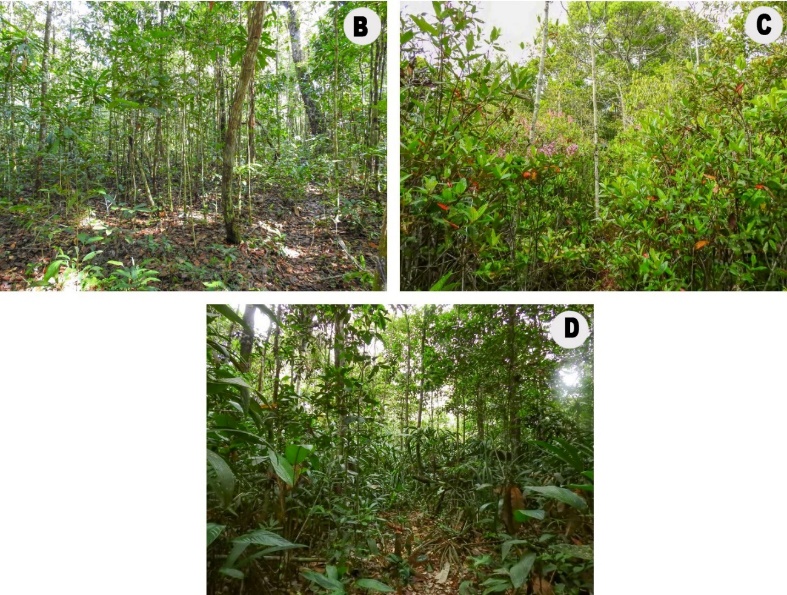 |
|
Figure 2
Location of the PPBio 5 km line in A) vegetation complex on white sand and the studied vegetation types: B) arboreal campinarana, C) arbustiva campinanara and D) forested campinarana. Santa Bárbara Community, Mâncio Lima-AC.
|
 |
|
Figure 3
Bird species that provided the largest number of seeds in the fecal material: A: Xenopipo atronitens (male); B: Lepidothrix coronata (female); C: Lanio surinamus (male).
|
Of 648 possible interactions, Maíra recorded 77 (Figure 4): 53 in the bush, 13 in the tree and 11 in the forest, however, both in the vegetation complex, as in each of the phytophysiognomies, the network has intermediate connectivity and nonsignificant nesting. In this network, Xenopipo atronitens is the most important species with the greatest number of interactions - 12 in the arboreal campinarana and 34 in the shrubbery -, while Ceratopipra rubrocapilla and Lepidothrix coronata accounted for the largest number of interactions in the forested campinarana (three and two, respectively) .
Maíra points out that the dispersion of seeds by birds in campinaranas, unlike other environments, occurs more commonly by species of the family Pipridae, such as, X. atronitens, a species of bird with a high number of interactions and a key to the complex on white sand. The non-significant nesting may be linked to the reduced number of species that form the network, the reduced size of the campinarana spot, or even to the fragility of this type of environment.
The work reveals the interactions between frugivorous birds and plants in an unprotected environment and with low resilience and highlights the species considered “anchors” for the other frugivorous / fruitful species in the network, and can contribute significantly to conservation strategies and initiatives and recovery of vegetation cover.
In addition to Maíra's work, another dissertation carried out in the PPBio area is yet to be completed and two doctoral works are in progress.






